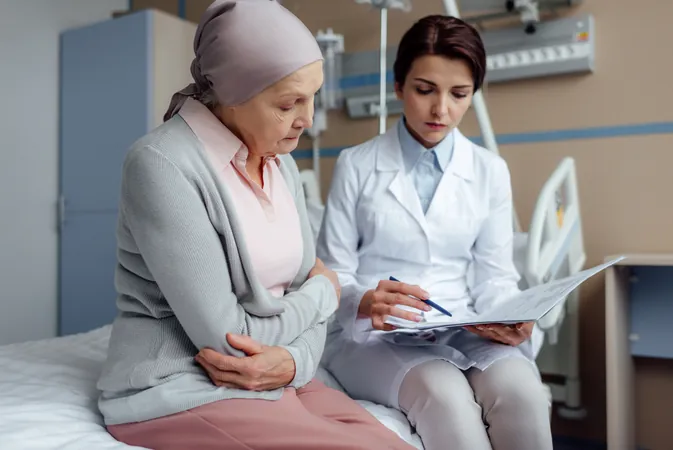
Shocking Study: Cancer Survival Rates Plummet for Low-Income Patients by 10%!
2024-11-06
Author: Rajesh
Introduction
In a groundbreaking study by the Netherlands Comprehensive Cancer Organisation (IKNL), stark disparities in cancer survival rates have been unveiled, revealing that individuals from lower-income backgrounds face a dramatically reduced chance of surviving a cancer diagnosis. Specifically, these patients are 10% less likely to be alive five years after their diagnosis compared to their wealthier counterparts.
Disparities in Survival Rates
The findings indicate that the prognosis is particularly grim for men, with poorer males facing a staggering 12% lower survival rate in comparison to their more affluent peers, while the difference for women stands at 7%. This alarming gap highlights how socio-economic status can play a critical role in health outcomes.
Financial Struggles Post-Diagnosis
But it doesn’t stop there—financial struggles play a considerable part in the aftermath of a cancer diagnosis. Over 22% of low-income patients reported financial problems following their diagnosis, a sharp contrast to just 12% among those with higher incomes. Stress has become an unwelcome companion to poorer patients, significantly impacting their quality of life during and after treatment.
Employment Factors
One contributing factor to these disparities is the nature of employment. As explained by Mieke Aarts, the lead researcher at IKNL, 'Higher earners are more likely to have an office job, which allows for flexibility in working from home or adjusting hours.' Conversely, individuals in lower-income brackets often hold physically demanding jobs in factories or on shifts, which restricts their ability to adapt work around treatment schedules, making recovery even more challenging.
Understanding the Healthcare System
Another significant observation from the study indicates that lower-income patients often struggle with understanding the healthcare system, facing difficulties in comprehending medical jargon. Aarts asserts, 'It’s understandable that people panic when they don’t know what doctors mean while they’re seriously ill. Under those circumstances, it becomes very difficult to take measured decisions about your own life.'
Treatment Disparities
Adding to the woes, previous research indicates that low-income patients are less likely to receive targeted treatments for their cancers, often settling for less effective therapies. This systemic issue points to an urgent need for reforms aimed at leveling the playing field in cancer care.
The Role of Preventive Measures
The researchers advocate for a stronger emphasis on preventive measures, highlighting the importance of discouraging smoking—the principal cause of lung cancer—and promoting healthier choices in supermarkets.
Economic Gaps and Patient Care
The study underscores that the economic gap leads to a more severe impact immediately after diagnosis when patients are least equipped to cope with the situation. 'Lack of money can also be a barrier to being referred to hospital or supportive care, such as a physiotherapist,' they noted.
Call for Policy Reassessment
In light of these findings, IKNL calls for a reassessment of health policy to consider socio-economic backgrounds, ensuring equitable access to comprehensive care options for all patients, regardless of their financial status. 'We shouldn’t accept that 10% of people live less long with cancer and have a worse quality of life,' Aarts firmly stated.
Conclusion
This sobering research serves as a wake-up call for policymakers and healthcare providers alike, emphasizing the urgent need to address socio-economic disparities in health outcomes to ensure that every cancer patient has a fighting chance.




 Brasil (PT)
Brasil (PT)
 Canada (EN)
Canada (EN)
 Chile (ES)
Chile (ES)
 España (ES)
España (ES)
 France (FR)
France (FR)
 Hong Kong (EN)
Hong Kong (EN)
 Italia (IT)
Italia (IT)
 日本 (JA)
日本 (JA)
 Magyarország (HU)
Magyarország (HU)
 Norge (NO)
Norge (NO)
 Polska (PL)
Polska (PL)
 Schweiz (DE)
Schweiz (DE)
 Singapore (EN)
Singapore (EN)
 Sverige (SV)
Sverige (SV)
 Suomi (FI)
Suomi (FI)
 Türkiye (TR)
Türkiye (TR)